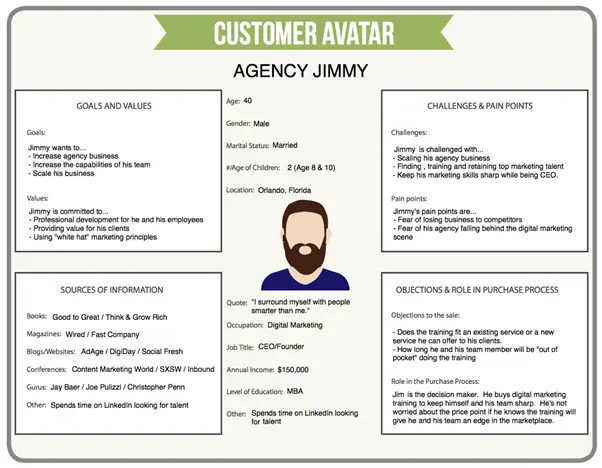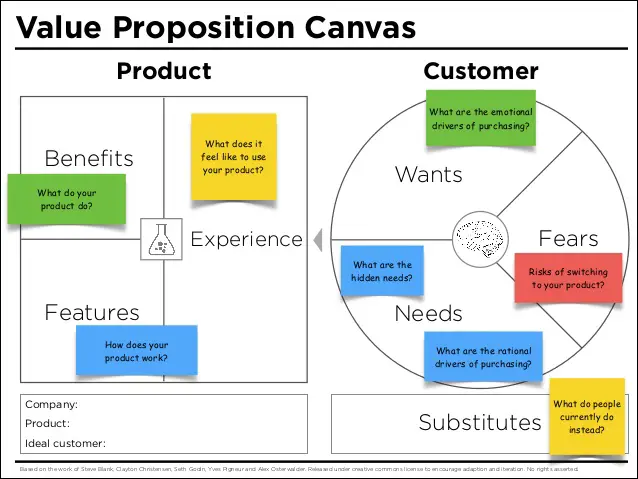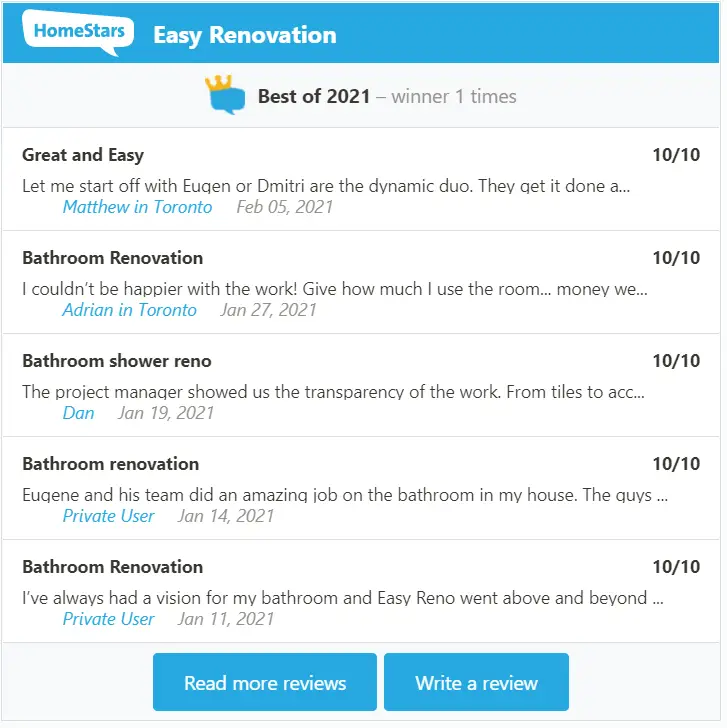Click here to get this post in PDF
According to failory.com, 90% of startup businesses fail. One of the primary reasons they’ve discovered is the owners’ failure to develop a product that matters the most to their target customers.
Imagine this, you’ve spent thousands of hours and dollars developing a product just to discover later on that no one wants to buy it. All efforts and money invested are totally wasted.
The good news is this fate is preventable by understanding and finding a product-market fit in the early stage. Having the idea of how to successfully develop your product and how to scale a startup you can avoid many risks
What is Product-Market Fit?
Product-market fit is the stage that the company successfully identifies its target market and develops the perfect products to offer to that market.
You don’t need to be a rocket scientist to know whether you have or don’t have a product market fit. According to Marc Andreessen, the term originator, you can easily feel it if it isn’t happening:
Here are a few of the signs you must watch out for:
- The product doesn’t satisfy the customer’s needs
- Demand isn’t consistently growing
- The product failed to convert and improve sales
If you’re getting the total opposite, it is safe to say that you successfully achieved product market fit.
Understanding its Concept
The simplest way to understand product market fit is by picturing other people voluntarily becoming your brand evangelist.
As they strongly believe in your product and its value, they will share their great experience with others and even be willing to sell them for you. Not only will this boost your profitability, but also help you build a solid community.
Don’t have an idea how to find it? Keep on reading and I’ll guide you in finding the product market fit suitable for just about any business.
How to Find Product-Market Fit?
Find product market fit right away by following these 4 simple steps:
1. Understand who your customers are
The first step in finding product market fit is to identify your target customers.
Ask yourself, who will benefit the most from your product? And are these people willing to pay for your product based on the promised value you give?
If you have a clear answer to these questions then you found your product market fit.
But if not, you can always use market segmentation. Through this method, you’ll able to do the following:
- Create custom buyer personas
- Continuously develop the product
- Adjusts advertising strategies accordingly
There are four market segmentation models you can use and those are:
A) Demographic Segmentation
This model paints a picture of who is your ideal audience. This identifies your customer groups by age, gender, ethnicity, income, profession, and more.
So, if you are starting an online business that offers private language lessons, for example, you can focus your marketing strategy on reaching out to the specific demographics who needed your services the most and likely can afford them.
Time, money, and effort are efficiently saved.
B) Psychographic Segmentation
If you prefer a more personal approach, psychographic segmentation is the recommended model to use.
This requires good, full-scale research. Successfully doing so will help you gather in-depth insights about your customer groups’ behavior, interest, lifestyle, and priorities.
The popular practical application of psychographic segmentation is selling retail products like electronic devices. Through this method, you’ll be able to create a personalized ad message (displayed on websites or sent via email) that highlights all the features suitable for a specific customer group.
For example, a customer wants a gadget that allows them to easily manage all their children’s electronic devices and online activities. You can focus your product offerings by stating its parental control features such as a screen time limiter and other security features that keep their kids anonymous online.
Offering a one-time discount is a great way to engage them to purchase.
C) Geographic Segmentation
For new businesses, owners tend to wonder whether to launch nationally or locally. In my opinion, it’s smart to launch it locally if you don’t have a solid customer base yet.
Geographic segmentation is the recommended model to use. It will help you identify your customer group by specific country, region, city, and postal code.
Do great research and ease your mind to get the exact areas where more buyers reside.
A digital marketing agency is one of the best practical applications for geographic segmentation. Not only can owners use it to pinpoint the best location to build their branch but also permits them to continuously develop their services based on the residents’ needs.
If you’re starting one, you can also design each service’s cost depending on what State or city the customer is based on. Give more consideration if customers are close to your office location.
This marketing strategy is also perfect to use for launching online events and marketplaces.
D) Behavioral Segmentation
It is proven that customers are willing to pay more for products and services that give a remarkable and personalized buying experience.
If so, behavioral segmentation is the most helpful model to find your product market fit. This model will point out all customers’ habits when it comes to purchasing, browsing, and interactions made with your business or website.
Finding all the data you need is way much easier compared to the other segmentation models. You can harvest all relevant information within your websites.
This lets you discover new opportunities that help you optimize your customer’s buying journey.
With the impeccable results it delivers, it becomes the ultimate choice for eCommerce businesses.
For example, your eCommerce store sells swimwear and sexy outfits. Using behavioral segmentation, you can easily distinguish first-time visitors from patrons and create a custom journey.
- For newly-subscribed visitors: You can send them a personalized message based on their browsing history on your site. You can also provide links to your best-seller items.
- For the patrons: You can redirect them to the latest arrivals and items on sale. It is great if you will offer an incredible discount for bulk orders.
Hungry for more insights?
The above-mentioned market segmentations are only the basics. You can get more valuable insights to boost your product market fit using advanced types.
You can get it fast too using reliable business intelligence and analytics tools.
2. Be Smart – Start Small
Now that you know how to narrow down your target market, you can begin to divide them into smaller segments.
Why start small when you can go big?
The answer is simple – competition. The larger market you reach means the tighter the competition you will get into.
As a startup company, your limited budget and resources wouldn’t take a chance to compete with established and bigger businesses.
So, to prevent burning too much money, it’s wise to start small.
The impact you create may not be as remarkable as with a larger market. However, this allows you to gain expertise for specific market segments.
Startups with a clear customer base in mind are the ones that can benefit the most from this strategy.
A good example of this is a marketing agency specializing in law firms. By starting small, you’ll be able to dig deeper into your customers and learn how you can provide a custom marketing strategy for their legal services.
3. Set Value Proposition
You can never fully find a product market fit without offering your main product to your customer base.
But wait…
Customer traction is crucial for startups. To ensure you will secure great customer traction upon launch, you need to set your value proposition.
Value proposition simply refers to the reasons why customers should purchase your product or do business with you.
In setting your value proposition, make sure that it includes all the product/service features that will both excite the customers and give your brand a competitive edge over your competitors.
A great example of this is Uber.
When Uber is starting up, the value they promise to provide when customers use their service is an easy and smart way to get around.
To ensure they will win people’s trust, they also state their other fresh and unique features:
- Requesting a ride is made easy with a few simple taps
- Budget-friendly pricing options
- Payment is completely cashless
- Access to 24/7 support in the app
This is their subtle attempt to highlight their service superiority over their main competitor – traditional taxis.
The value proposition is proven effective. However, many startup owners wonder if this concept is also applicable to other businesses such as law firms and accounting services.
The answer is a simple yes.
Let’s take a personal injury law firm for example. A great way to promote a unique value proposition for your customers is by identifying all your skills and qualities, both professional and personal.
List them down and create a captivating message through infographics on how you incorporate all these to serve your clients. This is an effective way to give your customers an idea of how you will treat them and make them feel that you truly understand what they’re going through.
Whether they are bitten by their neighbor’s dog or involved in a car accident, you must clearly identify all your customer’s problems and tell them how you can help to resolve them.
4. Get Feedback
Customer feedback plays a vital role in finding product market fit.
You can expect to receive them right after launching your products, whether they are in beta version or fully developed.
The beauty of feedback is you don’t have to rely on the customer’s will to provide one. You can always ask for it by getting in touch with them through social media groups, emails, online surveys (free or paid), and more.
What should you ask?
There are endless options of questions to choose from. But based on my experience, it is recommended to ask questions that can also help you further improve your product.
Here are a few of the promising questions you can ask:
- What part of our product/service do you love the most?
- What are the main benefits you receive from our product/service?
- How satisfied are you with our products/services?
- How likely would you recommend our product/service to your family/friends?
For the last two questions, it is best to ask these on a survey form where your customer can score their satisfaction/dissatisfaction level:
- Very unsatisfied
- Unsatisfied
- Neutral
- Satisfied
- Very satisfied
Take Easy Renovation for example. They embedded a review widget on every page of their website to help new visitors see their latest reviews.
On top of that, they also added a ‘Write a review’ button to engage existing customers to share their own experiences.
According to Marc Andreessen, receiving unsatisfactory reviews is one indication you don’t establish a good fit for your product.
It is indeed disheartening to receive tons of these types of reviews but you can always use them to your advantage. And that is to use them in re-identifying your value proposition and re-align it with your product’s feature set and marketing KPIs.
Final Thoughts
One thing you need to remember, product market fit changes your priorities.
This is why it is most helpful for startups as they can easily align their product based on their target market needs and requirements.
To ensure your efforts are on the right track, you can measure the results and organize them on a custom assessment report for easy evaluation.
The most popular method of measuring is through a product market fit survey. This survey contains the question of how dissatisfied your existing customers will be if you no longer offer your service.
You can evaluate the results using the 40% rule.
For example, you’re offering a furnace repair service. If the survey results give you 40%, and higher, of your customers, would be “very dissatisfied” when you shut down your service, then your service is considered a must-have.
Other methods you can use are by tracking the following insights:
- Bounce rate
- Customer lifetime value
- User engagement and retention
If you haven’t achieved your desired results, don’t worry. Most big companies like Twitter and GoPro don’t get it right as well on their first go.
The key to success is never to be complacent.
As your target market evolves, so should you. Successfully doing so will help you transform from startup to scale up.
About the Author
Christian Cabaluna is a finance blogger at awesomex with 5+ years of first-hand experience. When he is not writing in his favorite coffee shop, Christian spends most of his time reading, cooking, watching sitcoms, visiting beaches, and catching beautiful sunsets.






